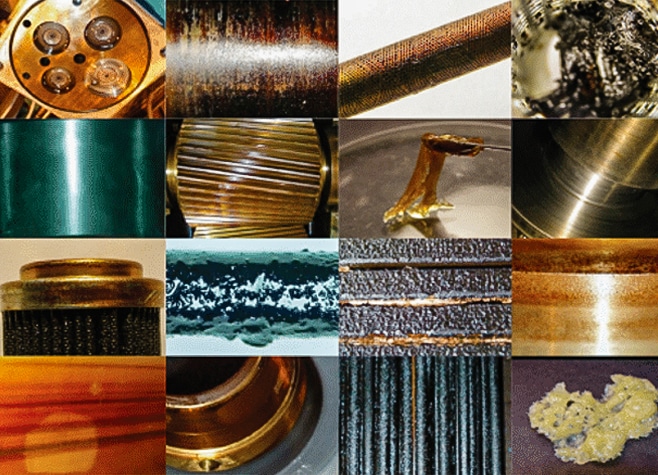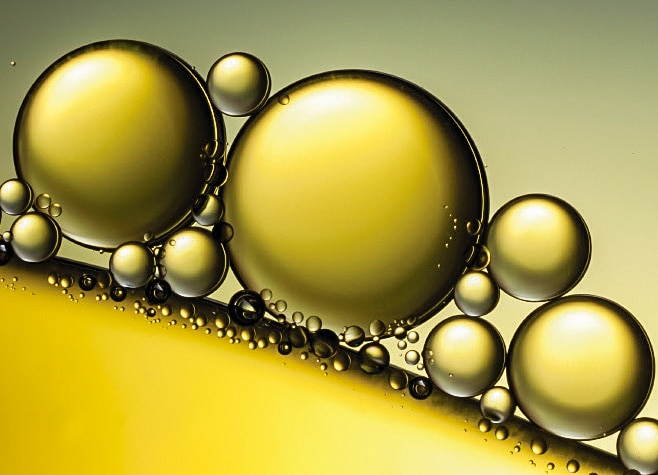
Is Antioxidant Monitoring Necessary?
Oxidation is one of the most prevalent forms of lubrication degradation which takes place in almost all lubricants. One method of combatting oxidation is through the use of antioxidants. While antioxidants are sacrificial in nature, their presence (or absence) is typically used as an indicator for oxidation. Hence, tests have been formulated to track different aspects of antioxidants but do these measures really add value?
What exactly is Oxidation?
Essentially, we need to understand oxidation before we delve into whether we should monitor antioxidants or not. Oxidation leads to a number of issues which affect the reliability of the lubricant. It can cause an increase in viscosity, varnish formation, sludge and sediment formation, additive depletion, base oil breakdown, filter plugging, loss in foam properties, loss of demulsibility properties, acid number increase, rust and even corrosion. Overall, oxidation is not recommended for your equipment!
In the past, oxidation was defined as a reaction involving the combination of oxygen which became accelerated with heat. However, its definition has been expanded to include any reaction in which electrons are transferred from a molecule. When applied to real life examples, iron undergoing rusting and combustion are also forms of oxidation. Alternatively, when applied to a hydrocarbon (such as base oil), oxidation involves slower reactions. These reactions undergo complex steps where a variation of products are produced.
Ideally, oxidation involves three basic steps; Initiation, Propagation and Termination. These are typically followed by condensation / rearrangement which increases the lubricant’s viscosity and insolubility of the by-product. By limiting the source of oxygen (initiation), shortening the number of reaction cycles (propagation) or adding alternate stopping methods (termination), oxidation can be controlled.
During initiation, a free radical is produced. This free radical is a molecular fragment having one or more unpaired electrons accessible to easily react with other hydrocarbons. Although free radicals are usually short-lived, they are highly reactive. As such, they propagate forming additional alkyl or peroxy-radicals and hydroperoxides. Typically, antioxidants are responsible for disrupting the propagation step as they terminate the process to form stable radicals. Therefore, there is a direct correlation between the number of free radicals and the depleted amount of antioxidants.
Finding out more about Antioxidants
Before we explore the world of antioxidants, we need to understand why they exist and their purpose in preventing oxidation. As we noted above, antioxidants are essential in the prevention of oxidation. Their main purpose is to protect the base oil even though this is a sacrificial role. They can protect the base oil in two ways either by:
- Scavenging radicals (alkyl and peroxy) or
- Decomposing hydroperoxides into stable products.
Consequently, two main categories of antioxidants exist namely; primary and secondary antioxidants. These are typically seen in most oils and can also exist in a mixed system combining both primary and secondary antioxidants.
Primary Antioxidants are known as radical scavengers and remove radicals from the oil. Amines and phenols are the most common types of primary antioxidants. These can exist in turbine oils with an average concentration of 0.3 – 0.7 wt%. These can both be measured using the RULER test.
Secondary Antioxidants on the other hand, eliminate peroxides to form non-reactive products which do not participate in further oxidation of the lubricant. ZnDtP or ZDDP (Zinc dithiophosphates) and sulphurized phenols are examples of secondary antioxidants. The average concentration of these ZDDP antioxidants can reach up to a maximum of 1.5 wt% in automotive crankcase lubricants. These are also detectable through the RULER analysis.
Mixed antioxidant systems are often used in synergistic mixtures to achieve extended lubricant life. In this situation, one antioxidant sacrifices itself in preservation and regeneration of the other. This is typically seen between amines and phenols. Usually, the phenols deplete early in the oxidation life while the amine depletion is more stable during this time. Another example of a mixed antioxidant system includes a combination of primary and secondary antioxidants which can remove both radicals and hydroperoxides.
Oxidation Tests
There have been a number of tests developed to study the behaviour of oxidation of a new fluid, which include:
- ASTM D2272 (RPVOT – Rotating Pressure Vessel Oxidation Test)
- ASTM D4310 (Sludging)
- ASTM D943 (TOST – Turbine Oxidation Stability Test)
- ASTM D6514 (UOT –Universal Oxidation Test)
On the other hand, these tests were developed to measure the effects of oxidation on the In-Service oil:
- ASTM D6971 (RULER – Remaining Useful Life Evaluation Routine)
- ASTM D7893 (MPC – Membrane Patch Calorimetry)
- ASTM D664 (Acid Number)
There is a difference between studying the behaviour of oxidation of a new fluid vs measuring the effects of oxidation on the in-service oil. The measurement of the effects of oxidation on the in-service oil gives us more info on what is taking place with the oil currently in the system. One of the most useful tests is the RULER test which trends the presence of antioxidants in the lubricant. The following can be used as a guide for interpreting turbine, compressor and other R&O oils depending on the antioxidants used:
Amine only formulations: Warning limit at 50% but condemning limit at 25%
Phenol only formulations: Warning limit at 50% but condemning limit at 25%
Amine-Phenol formulation: Warning limit when amines are at 50% but condemning limit when amines are at 25%
One should note that under oxidative conditions, phenols regenerate amines, as such they deplete first. This is characteristic of the mixed antioxidant system which we spoke about earlier. However, if amines are depleting at the same rate as phenols or faster, water could be entering the reaction causing unusual degradation.
Essentially, oxidation is one of the most prevalent forms of degradation and antioxidants help to reduce the rate of oxidation. Therefore, the monitoring of antioxidants can prove beneficial in understanding the rate of oxidation observed by in-service oils. Ideally, the RULER test emerges as the leader when monitoring the health of antioxidants. However, Acid Number, RPVOT and MPC are also critical tests that should be performed when monitoring oils for oxidation.


